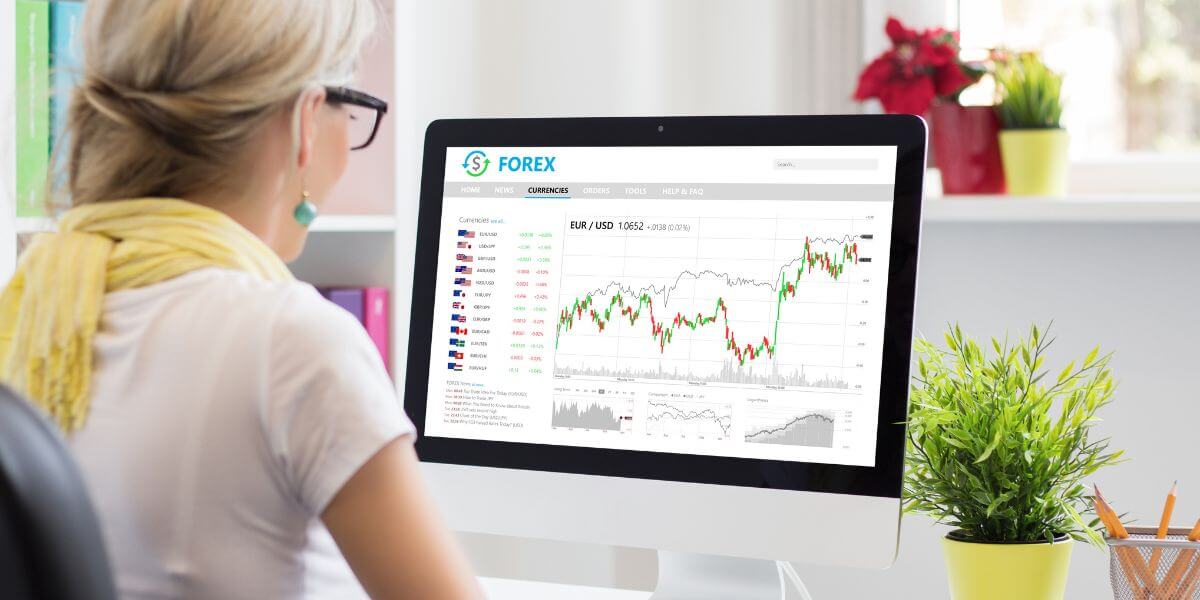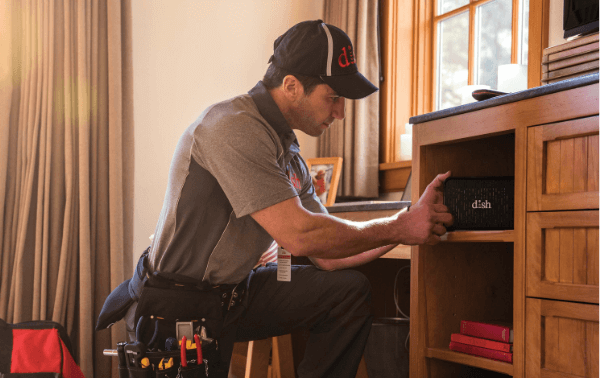The Hidden Benefits of Fiber’s Low Latency for Day Traders and Online Investors
Table of Contents
In the world of financial markets, success isn’t just about making smart moves—it’s about making them faster than everyone else. For day traders and online investors, even a millisecond can be the difference between a win and a loss.
That’s where fiber internet comes in. Its super low latency isn’t just a nice-to-have—it’s a strategic edge that many traders don’t realize they need.
What Is Latency and Why Does It Matter for Online Trading?
Latency refers to the time delay between sending and receiving data across a network. In the context of online trading, it’s the precious milliseconds between when you click “buy" or “sell" and when your order actually reaches the market.
Why does this matter so much? In the world of high-frequency trading, speed is everything—so much so that major firms have invested millions to shave milliseconds off trade execution times, showing the immense value firms place on even the slightest latency improvements [1].
The Real Cost of High Latency in Trading
When you’re trading online, high latency can impact your success in several critical ways:
- Price Slippage: The market price may change between when you place an order and when it’s executed, potentially costing you money.
- Missed Opportunities: Fast-moving market events may be over before your trading platform can even display them.
- Algorithmic Disadvantage: You’re competing against high-frequency trading systems that operate in microseconds.
- Data Feed Delays: Market information reaches you later than other traders, putting you at an information disadvantage.
In the world of trading, where every second counts, a reliable internet connection is the foundation of success. The financial impact of these delays compounds with every trade, potentially costing serious investors thousands or even millions annually.
How Fiber Internet Delivers Superior Low Latency

Day trading with fiber internet
Fiber internet stands head and shoulders above other connection types when it comes to latency. Here’s why fiber internet providers offer the fastest possible response times:
Direct Light-Speed Transmission
Fiber optic networks transmit data using pulses of light through glass or plastic fibers [2]. This technology allows information to travel at nearly the speed of light—the fastest possible speed in the universe. By comparison, traditional copper-based connections (like DSL or cable) transmit data through electrical signals, which move significantly slower.
Minimal Signal Degradation
Copper-based networks suffer from increasing signal degradation over distance, requiring numerous repeaters and amplifiers that each add latency. Fiber signals maintain their integrity over much longer distances, dramatically reducing these extra processing steps and keeping latency to an absolute minimum.
Consistent Performance Under Load
One of fiber internet’s most significant advantages is its consistent performance even during peak usage times. Unlike cable or DSL connections that slow down when many people in your neighborhood are online, fiber internet providers maintain steady speeds and low latency regardless of network congestion.
The Measurable Advantage: Fiber vs. Other Connection Types
When comparing home internet providers for trading purposes, the latency differences are striking:
| Connection Type | Average Latency | Consistency Rating |
| Fiber Internet | 5-10ms | Excellent |
| Cable | 15-30ms | Good |
| DSL | 25-40ms | Fair |
| Satellite | 500-700ms | Poor |
| Mobile/4G | 50-100ms | Variable |
For day traders, these differences aren’t just numbers—they represent real financial advantages. When you compare internet providers, remember that fiber’s 5-10ms latency means your trades execute 3-10 times faster than with traditional broadband options.
Beyond Speed: Other Critical Benefits of Fiber for Traders
While low latency is the headline advantage, fiber internet delivers several other benefits that are particularly valuable for serious online investors:
Symmetrical Upload and Download Speeds
Most traditional internet connections offer much faster download than upload speeds. Fiber internet providers typically deliver symmetrical connections, meaning your upload speeds match your download speeds. This is crucial for traders who need to send large amounts of data (such as complex trade orders or analytical models) just as quickly as they receive market information.
Enhanced Security
Financial transactions demand the highest level of security. Fiber connections are inherently more secure than other options because:
- They don’t emit signals that can be intercepted
- They’re extremely difficult to tap without detection
- Any tampering typically results in complete signal loss rather than compromised data
Superior Reliability
For traders who can’t afford downtime, fiber internet’s reliability is invaluable. Fiber optic cables are:
- Immune to electrical interference
- Resistant to weather conditions
- Not affected by power outages (the signal is light, not electricity)
- More durable and less prone to physical damage than copper wires
This translates to fewer disconnections and more consistent trading performance.
Real-World Applications: How Traders Leverage Fiber’s Low Latency
Professional traders and investment firms are increasingly recognizing fiber’s critical advantages. Here’s how various market participants are putting fiber’s low latency to work:
Day Traders
Individual day traders with fiber connections can execute significantly more trades per day with greater precision. This is particularly valuable for strategies like scalping, where profits depend on capturing very small price movements through rapid entry and exit from positions [3].
Algorithmic Traders
For those using automated trading systems, fiber’s low latency ensures algorithms can react to market conditions as designed, without unexpected delays compromising strategy performance. This is crucial when algorithms are making split-second decisions based on technical indicators or market microstructure.
Options and Futures Traders
Derivatives traders dealing with fast-moving, highly leveraged markets benefit enormously from fiber’s responsiveness. When trading options or futures contracts—especially near expiration—even minor latency issues can result in dramatically different outcomes.
Remote Professional Traders
As more trading professionals work remotely, having fiber internet at home has become a professional necessity rather than a luxury. Proprietary traders and institutional employees working from home offices can maintain the same performance standards they would have in an office environment.
Optimizing Your Trading Setup with Fiber Internet

Making the right choice
If you’re serious about online trading or investing, here are key considerations when setting up your fiber internet connection:
Choosing the Right Fiber Internet Provider
When you compare internet providers for trading purposes, look beyond just the advertised speed:
- Latency Guarantees: Some fiber internet providers specifically offer low-latency guarantees that are beneficial for traders.
- Service Level Agreements: Business-class fiber services often include SLAs that ensure any outages are addressed quickly.
- Peering Arrangements: Providers with direct peering to major financial exchanges can offer even lower latency for trading activities.
- Redundancy Options: Consider providers that offer backup connections or seamless failover during outages.
Complementary Hardware Optimization
Pairing your fiber connection with the right equipment maximizes your advantage:
- Use a high-performance router specifically designed for low latency
- Consider a direct ethernet connection rather than Wi-Fi for trading activities
- Implement Quality of Service (QoS) settings that prioritize trading application traffic
- Use trading-specific monitors with high refresh rates to visualize market movements faster
Monitoring and Testing Your Connection
Regular performance checks should be part of every serious trader’s routine:
- Use latency testing tools to regularly verify your connection’s performance
- Monitor for jitter (variation in latency), which can be as problematic as high latency
- Schedule critical trades outside of known network maintenance windows
- Consider connection monitoring services that alert you to performance issues
The Investment Perspective: Is Fiber Worth the Cost for Traders?
Home internet providers offering fiber connections typically charge premium prices compared to other options. For traders, this cost must be evaluated as a business expense rather than a typical household utility.
Consider a day trader making 50 trades daily, with an average profit target of $100 per successful trade. If lower latency improves execution success by just 5%, that’s an additional $250 per day or over $60,000 annually (assuming 250 trading days). Compared to the typical $20-50 monthly premium for fiber internet versus other options, the return on investment is extraordinary.
Future-Proofing: Why Fiber’s Importance Will Only Increase

The competitive edge of fiber for the modern Ttader
The financial markets continue to accelerate, with trading speeds measured in microseconds at institutional levels. As algorithmic trading expands and markets become even more responsive to global events, the latency gap between fiber and other connection types will become increasingly significant. For serious day traders and online investors, the question isn’t whether you need fiber internet—it’s whether you can afford to be without it. As markets evolve, having the lowest possible latency will only become more critical to trading success.
Fiber internet’s exceptionally low latency provides a measurable edge that directly impacts your bottom line. While casual investors might not notice the difference, serious day traders and active investors will find that fiber’s speed, reliability, and performance consistency deliver meaningful improvements to trading outcomes.
As you evaluate home internet providers for your trading activities, prioritizing fiber internet isn’t just about faster web browsing or smoother streaming—it’s about giving yourself every possible advantage in markets where milliseconds equal money.
Ready to experience the competitive advantage of fiber internet for your trading activities? Enter your zip code to see which fiber internet providers serve your area and start trading with the lowest possible latency today.
Sources
[1] Communications of the ACM. “Attack of the Killer Microseconds."
[2] Kirbtech. “Fiber Optic Networking Explained."
[3] Investopedia. “What Is Scalping in Trading?"






 Call
Call 

 Access Your Account
Access Your Account